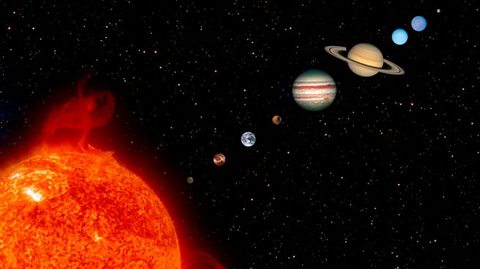Rainbows are a very special phenomenon - not only are they packed with interesting science, theyÔÇÖre also an important symbol in many cultures across the globe.
So what exactly is a rainbow? It sounds like a bit of storybook magic, but three ingredients are needed to make a rainbow as we know it: water droplets, sunshine and you. We see sunlight as white but itÔÇÖs actually made up of many colours. A rainbow is made during a process called refraction, where light bends inside a prism (in this case, the spherical raindrops). Each colour is refracted at a different angle and so becomes visible as the colours disperse. So if the Sun is behind you and the rain is in front of you, youÔÇÖll see the reflection of the light in the form the optical phenomenon of the rainbow - but you wonÔÇÖt be able to see it if you stand at a different angle.
Seven things you didnÔÇÖt know about rainbows

1. Rainbows can appear at night
ItÔÇÖs widely accepted that there are seven visible colours of the rainbow: red, orange, yellow, green, blue, indigo, violet. But every person experiences those colours differently - so in that sense every rainbow is unique. Red, having the longest wavelength, will always appear towards the outside, while the blue-spectrum colours will always appear on the inside as they have shorter wavelengths.
But there are also many magical kinds of rainbow - even a kind you can see at night! Moonbows appear when water droplets are reflecting moonlight instead of sunlight, though they're generally fainter and require the light from the Moon to be very bright. Mistbows and fogbows exist, too, and appear as a white or yellowish bow.

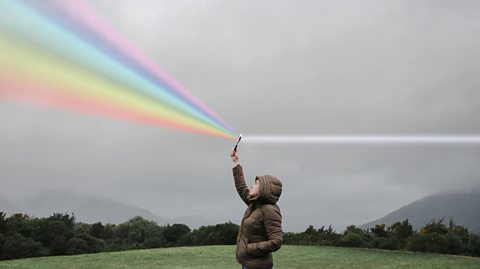
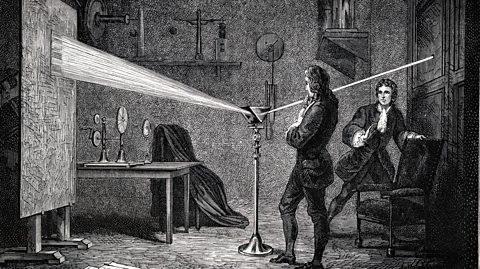
2. WeÔÇÖve always loved dissecting rainbows
The science of rainbows had been documented all over the world since ancient times. In 65AD, Roman philosopher Seneca observed the fact that they always appear opposite the Sun and showed up in sprayed water. Aristotle suggested that all colour was celestial and made up of lightness and darkness, and this theory was widely held until 2000 years later, when Isaac Newton demonstrated refraction and dispersion using glass prisms in 1660, building on the work of many others before him. Newton established the visible spectrum had five colours, then seven as his experiments continued. These discoveries allowed us to understand both visible and invisible colour wavelengths better.
There's maths involved, too: rainbows have a 42.5 degree radius from the antisolar (facing away from the Sun) point.

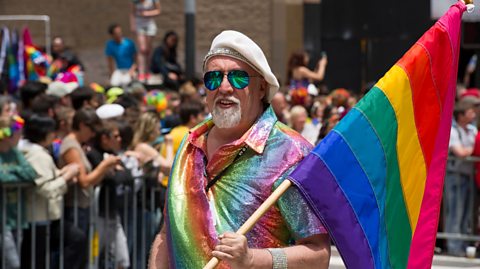
3. The rainbow connection is a global one
Outside of science and maths, rainbows show up in many different cultures and mythologies too. In the Bible story of NoahÔÇÖs Ark, God sent a rainbow representing a A binding agreement made by two or more parties. to never destroy the Earth in a flood again. In Norse mythology, the rainbow is the Bifr├Âst - a bridge between Midgard and Asgard, the realm of the gods. Across many Australian Aboriginal cultures, the Rainbow Serpent is often regarded as a creator deity, and the rainbow is them travelling from waterhole to waterhole.
In 1978, artist Gilbert Baker designed the first rainbow flag as a symbol of Pride. The flag originally had eight coloured stripes, with a meaning assigned to each. For example, the yellow stripe stood for sunlight, the green for nature, and the violet for the human spirit - no stripe for rain though! The rainbow with six colours is still flown today, as well as new versions which include many communities.

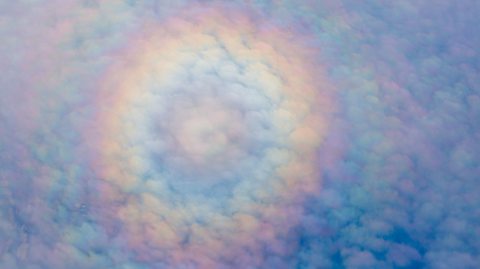
4. WhatÔÇÖs over a rainbow?
All rainbows are circles, but as we usually view them from the ground, we only see the arch as itÔÇÖs cut off. Unfortunately you canÔÇÖt reach the end of a rainbow, so thereÔÇÖs no pot of gold hiding there.
What you're technically viewing is the base of a cone. If you were to see it from far enough away and from the right angle, such as from an aeroplane window, you would see the whole circle.

5. Is there a rainbow season?
Obviously we know that rainbows depend on the right weather conditions - but did you know season affects them too? YouÔÇÖre less likely to see them in winter because of snow: while snowflakes are made up of frozen droplets of rain, they block the light and prevent it from bending and reflecting back. Surprisingly, rainbows are most common in summer, probably because of the sunshine - look west to view rainbows in the morning and east in the evening.
Environment is also a key factor. Kauai, Hawai╩╗i, is known as the Rainbow State for a reason - the island is home to Mount Wai╩╗ale╩╗ale, whose name means ÔÇÿrippling waterÔÇÖ, one of the wettest spots on Earth. Rainbows are likely to be spotted here more frequently than anywhere else.

6. Over the Moon
There may be rainbows on other astral bodies. On Titan, one of SaturnÔÇÖs moons, there is the presence of water, but itÔÇÖs unlike water on Earth - rather itÔÇÖs liquid methane, which would be natural gas in our atmosphere.
Rainbows viewed through TitanÔÇÖs ÔÇÿwaterÔÇÖ would have similar characteristics to earthly rainbows, e.g. the blue light would appear on the inside with red on the outside. But the angle of refraction through the methane droplets would be different, so a Titan rainbow would be much bigger at a 49 degree radius from the antisolar point. TitanÔÇÖs atmosphere is also -179┬░C, so these would very much be ÔÇÿwinterÔÇÖ rainbows.
Infrared rainbows - also known as monochrome rainbows - appear as one red bow, and these are suspected to be a lot more common on Titan than a multicoloured rainbow. However infrared light is invisible, so you would need technology such as night vision goggles to see them.


7. (Ultra) Violet: the most mystical colour
You know by now there are seven visible colours in the rainbow, but violet is perhaps the most intriguing. Violet is different from purple - in fact, what our brain understands as ÔÇÿpurpleÔÇÖ doesnÔÇÖt actually exist, as it doesnÔÇÖt have a static wavelength. Instead, our brain ÔÇÿfills inÔÇÖ the gap between red and blue by mixing the two visible colours to create purple.
Violet on the other hand is a spectral wave colour which we can see, but ultraviolet (UV), meaning ÔÇÿbeyond violetÔÇÖ, is a type of radiation with a shorter wavelength and is blocked by our corneas. These radiations are present in sunlight and are made up of UVA and UVB rays. Both are damaging to our DNA, but UVB rays help us to generate Vitamin D - which is why itÔÇÖs important to enjoy the Sun safely and use sun protection. Many insects and animals can process spectral colours which we can't. For example, UV light helps reindeer find lichen in the snow, and ripe bananas glow blue under UV light, which could attract nocturnal hunters to eat them and spread the seeds. It's thought that dogs and cats can also see on the UV spectrum - which might explain why your house cat stares at invisible things!
This article was published in June 2023
Pride Month: Five ways LGBTQ+ communities have been celebrated
From rainbow flags to Pride marches, how has the LGBTQ+ community been commemorated?
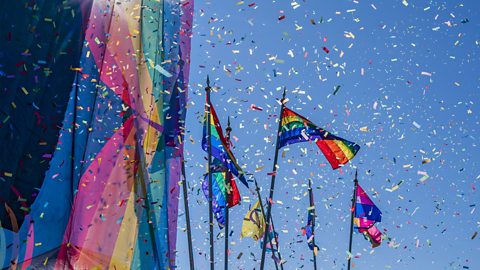
Pride Month: Six symbols of pride
We look at some modern and historic symbols of alliance, protest and pride.

From snow on Mars to hurricanes on Jupiter - extraterrestrial seasons can get pretty wild.
